
|

|

|
Japanese Car Spotters Guide - 1983 |
|
|
 |
|
|
|
|
|
|
|
Despite the strenuous efforts being made to reduce fuel consumption, the basic design of the petrol engine, which of course powered the vast majority of cars in 1983, changed relatively little. There were a few innovations, however - several of them Japanese. On the engine fitted to the front-wheel drive Toyota Corolla introduced in May, for example, each intake port splits into two passages of unequal size. The smaller of the two is curved to promote swirl during low-speed running. The larger offers less obstruction to the incoming mixture but is sealed by a swirl control valve (SCV) which opens under the innfluence of manifold pressure only when more power is needed. In this way parttthrottle economy is improved but fulllthrottle power remains unimpaired. Similar reasoning led to a rather different physical arrangement in the four-cylinder l2-valve Honda engine introduced with the new Prelude and now used throughout the range. In this engine each combustion chamber is provided with two inlet valves, the opening and closing of the first being timed so that there is no overlap between it
and the single exhaust valve which lies directly opposite. The second valve is laterally displaced from the first to create an L-shaped configuration and its timing does incorporate overlap. At low speeds and throttle openings, however, the lag imposed by the longer gas path associated with the lateral displacement cancels the overlap effect so that very little unburnt mixture passes through the combustion chamber to be wasted in the exhaust system. But at the increased gas velocities associated with higher speeds and larger throttle openings, the longer induction path represents no significant obstacle, and the benefits of valve overlap for top-end power are retained.
The advantage of using more than two valves for each combustion chamber of a spark-ignition engine have been known at least since Ernest Henri designed the fourrvalve engine of the 1913 Grand Prix Peugeot. The reasoning is simple: the total area of the four largest valves that can just be squeezed into a surface of a given size is considerably greater than the area of the two largest valves that can be squeezed in. For it is always possible to cover a given area (or fill a given volume) more completeely with a large number of small objects than with a small number of large objects: the boot of a car, for example, will accommmodate a greater volume of table tennis balls, which fill every corner, than of suitcases. And with more area more mixture can be drawn in on every stroke and more power developed. In a four-valve configuration, too, more area also becomes available to cool the valves, while their lower individual inertias makes it possible to reduce valve mechanism stresses.
This configuration, virtually a standard design feature of racing engines, has long been used for high-performance roaddgoing power units also, and was recently adopted by Daimler-Benz for a sporting version of the 190. The special twin-cam 166valve cylinder head was developed with the help of Cosworth Engineering in Britain, who will be supplying the basic castings, and is mated to the bottom end of a standard Mercedes 2.3,liter engine. The result is a 185 bhp road-burner capable of 235 km/h, with acceleration to match, which has already broken a string of records at Nardo and must be making BMW very nervous, even though it won't be available until next July. Just recently, though, a number of manuufacturers have begun to realize that the four-valve combustion chamber has other advantages. Perhaps partly because of its tolerance of high compression ratios owing to excellent exhaust valve cooling, perhaps partly because of the high turbulence associated with two separate jets of inncoming mixture, it is also known for the outstandingly good specific fuel consumpption that can be extracted from it. Both Saab and BL Technology have acknowlledged their interest in this potential and their intention of developing engines designed to exploit it.
For the most part, though, petrol engines changed relatively little in mechanical design during the last twelve months. Compression ratios were raised a little and mixtures made a little leaner, but no radical combustion systems were introduced or new mechanical arrangements put into production. But those lean burn/high compression combinations are very often only made possible by the microchip and the sophissticated electronic engine management systems it makes possible. Systems of this sort, such as the Bosch Motronic, are no longer to be found merely on up-market fuel-injected cars of the BMW class, but are very rapidly being fitted to low-cost highhvolume models with carburetters, while breakerless transistorized ignition systems are swiftly becoming the norm. Thus the ignition timing of the engine fitted to the new Fiat Uno ES model is no longer controlled by the usual centrifugal and vacuum arrangements, but by the Marelli Digiplex system. The new Austin Maestro retains a conventional ignition timing system, but has quite an elaborate elecctronic engine management system, conntrolling an overrun fuel cut-off, cold starting and warm-up.
Advances in diesel engine design were gradual in 1983. Ford were claiming high efficiency for their new lightweight four-cylinder unit availlable on the Fiesta, but it was essentially of the conventional indirect-injection type. A number of manufacturers talked about introducing the fundamentally more efficient direct-injection engine in a form suitable for automotive applications but none had managed to do so for their 1983 models. Perhaps the boldest step was taken by Daihatsu who introduced a tiny three-cylinder diesel for their revamped Charade model - thus creating what must surely be the most potentially vibratory power unit for transport purpose to be seen outside a boat. Early reports, however, suggest that it is a good deal less rough than might perhaps be expected. Another important innovation, but of a different sort, was introduced by Honda in the form of the four-wheel anti-lock brake (4W-ALB) system fitted to the new Prelude.
The control logic of this differs from that of existing systems such as the Bosch ABS design. In the Honda system the rear wheels are controlled as a pair with "select low" logic determined by the conditions necessary to prevent the wheel with the lowest grip from locking up, while the front wheels are controlled as a pair with "select high" logic - which means that the low-grip front wheel is allowed to lock up as long as the high-grip one does not. Honda claim advantages for this system, but tests suggest that while it works well enough, it does so in a crude and unrefined way compared to the ABS system. But its significance lies far less in the details of its performance than in the fact that Honda have brought anti-lock braking within the reach of the ordinary motorist by developping a relatively inexpensive system. |
 |
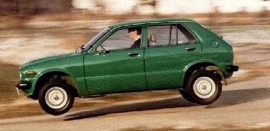 |
 |
Daihatsu Charade |
| |
Also see: Daihatsu Car Reviews |
| |
A well known name among Japan's second-line manufacturers, the Daihatsu Charade appeared in a new guise in 1983. A new body with more European lines featured an unusual option, a slightly raised roof which enabled a sun roof to be fitted without interfering with interior headroom. The three-cylinder 993 cc engine was unchanged, however it was available in a diesel version, then one of the smallest compression-ignition engines marketed. |
|
 |
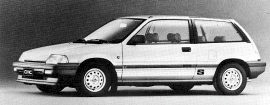 |
 |
Honda Civic |
| |
Also see: Honda Car Reviews |
| |
Honda chose the 1983 Frankfurt Auto Show as the launch pad for their new range of cars, which included a new Civic range. Honda's styling was miles ahead of the other Japanese makers, and while some Nippon manufacturers had individual models whose lines were attractive, none had a range to compare, and the 1983 Civics continued Honda's aesthetic lead. Most orthodox of the three-model range was the hatchback, essentially a restyling of the model which marked Honda's emergence as a major car manufacturer. The five-door version, the Shuttle, followed the new high roof styling line and offered maximum space for five in a minimum road space. For enthusiasts, the CRX coupe was the most exciting of the trio, recapturing the spirit of the MG Midget or Austin Healey Sprite of days gone by. There was plenty of room for two, and no room for more, although a rear parcel platform was upholstered to give the appearance of seats. Plastic panels at the front and on the lower body resisted knocks and reduced weight, and the 1.5-liter engine had fuel injection and 100 hp available. Like all the Civic range, the CRX engine had three valves per cylinder. The other two cars were available with a choice of 1.2, 1.3, or 1.5-liter engines, and the three-valve engine range was also introduced in 1.6 and 1.8-liter capacities for modified models of the Accord which were also announced at Frankfurt. |
|
 |
 |
 |
Honda Prelude |
| |
Also see: Honda Car Reviews |
| |
The 1983 Honda Prelude was the second version of a model which had created its own niche in the market. The original Prelude had been a re-work of Accord components to make a sports coupe, and the result, although attractive, was something of a hairdresser's car - more show than go. The 1983 Prelude, however, promised much more, and lived up to most of the promises. The body styling was a fine example of what Japanese designers were capable of producing, and the restrained lines would have done credit to any European design studio. The interior too, was elegantly designed, with the high level of equipment which buyers had come to expect from the better Japanese makers. But this was a show and go car, and under the skin were a number of interesting technical innovations. First was a new 1.8 liter four-cylinder engine with three valves (two inlets and one exhaust) per cylinder producing 105 hp. The second major contribution to performance was a new front suspension, utilizing double wishbones and looking more like something off a racing car designer's drawing board than a volume car manufacturer's. Coupled to this were the options of a four-speed automatic transmission and a simplified, but effective, anti-lock braking system. The whole promised to be something special, and some testers at the time were a little disappointed when the car was not as special as they thought it would be. A couple of mediocre reviews however was not enough to stop the buyers. |
|
 |
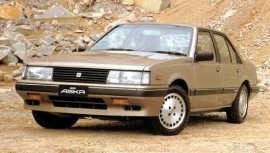 |
 |
Isuzu Aska |
| |
Also see: Isuzu Car Reviews |
| |
The original Aska was developed as a part of GM's J-car program and was a welcome replacement for Isuzu's sorely dated Florian. Contrary to fellow J-cars from other GM divisions, the Aska only came in one body style, a 4-door sedan (the station wagon body style on the Florian proved to be relatively unpopular and was discontinued back in the early 1970s). The Isuzu J car variant differed most notably in the rear styling from other J-car variants. From 1983 to 1984, the Aska was known as the "Florian Aska", before being renamed in 1985 as the "Aska". The car was launched in March 1983 with 1.8 and 2.0 liter petrol engines and a diesel. In 1985, a turbocharged version of the 2.0 liter engine, which developed 150 PS, joined the lineup. Branded by the German tuner Irmscher (specializing in GM cars and cooperated with Isuzu on some other models too), this version featured a distinictive body kit and became somewhat of a cult object among some car fans in Japan. The Aska was exported to southeast Asia, where it was known as the Isuzu JJ, and to New Zealand as the Holden Camira (JJ) between 1984 and 1987, in lieu of the JD Camira, manufactured in Australia, because the previous Australian-sourced JB Camira fared badly in the New Zealand market (nonetheless, the JD wagon was imported concurrently from Australia). The Aska was also assembled in Arica, Chile from CKD kits from 1984 and sold as Chevrolet Aska in the domestic market and in Ecuador. The first generation Aska was discontinued in 1989; production totaled 108,512 cars. |
|
 |
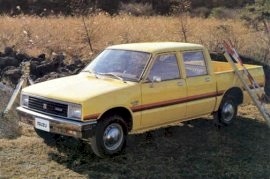 |
|
 |
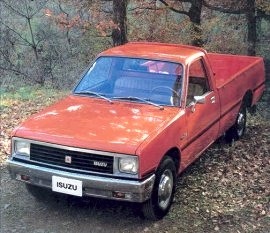 |
|
 |
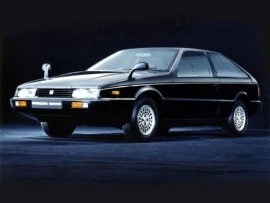 |
|
 |
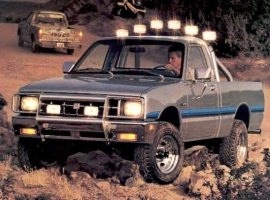 |
|
 |
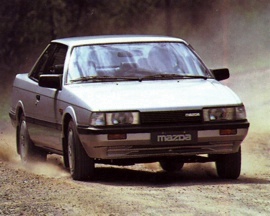 |
 |
Mazda 626 |
| |
Also see: Mazda Car Reviews |
| |
The Micra (see below) was never going to be a real driver's car, but another Japanese offering in the early days of the year was a different matter. The Mazda 626 came from one of the fastest-growing Japanese manufacturers at the time, and enthusiasts claimed this was a reflection of the corporate philosophy, part of which was that cars should be enjoyable to drive. This aspect of driveability was stressed strongly in the development of the front wheel drive 626, and prototypes were assessed against such yardsticks as the BMW 3 series and the Audi 80 for handling and comfort. The result was a range of cars which, although they may not have been the match of the best of the Europeans, certainly went a long way towards joining European road manners to Japanese levels of equipment and value for money. New from the ground up, the 626 range was born fully-developed, with saloon, coupe, and hatchback versions available in 1.6 and 2.0-liter versions producing 81 and 102 hp respectively. The engines were also entirely new designs, embodying then current thinking on light weight and reduced internal friction to improve fuel economy. The inline fours with their single overhead camshafts did not represent any significant step forward in power unit design, but they did reflect the state of the art fairly faithfully, as did the suspension system, which used the Mazda-patented Twin Trapezoidal Link system, first used on the 323, at the rear. A unique aspect of the front suspension was the fact that it used unequal length lower links to compensate for unequal cornering forces due to the offset engine position. Another unusual feature available on the high performance versions was the provision of dampers with variable settings which could be controlled from the fascia, giving the choice of touring or sport settings. If required, the dampers could also be adjusted automatically, changing to the 'sports' position when speed went beyond 50 mph. Not many were suprised when the 626 was named Car of the Year in Japan. |
|
 |
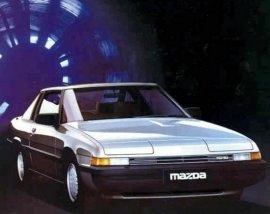 |
|
 |
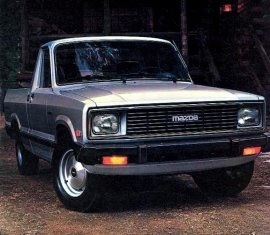 |
|
 |
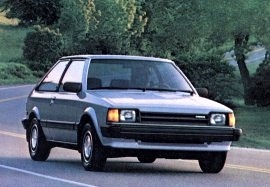 |
|
 |
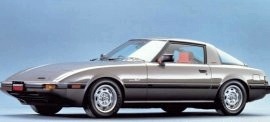 |
|
 |
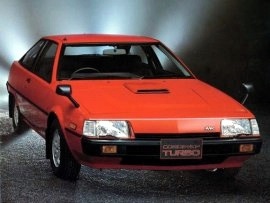 |
 |
|
| |
Also see: Mitsubishi Car Reviews |
| |
The Mitsubishi Cordia is fondly remembered by many who owned one in the 1980's, although the ownership experience soured somewhat over time, as most were punished by their youthful owners. In standard guise, the Cordia was somewhat of a big brother to the Colt, and was available only as a two-door hatchback with 1.6 liter Saturn engine mated to the Colt's dual range style transmission or optional 3 speed automatic. Importantly, the Cordia handled and went reasonably well - at least by the standards of the day. The steering was rack and pinion, with MacPherson struts up front and fully independent trailing arms connected by Mitsubishi's U-shaped rear suspension crossover at the rear. This setup certainly improved stability, - although the ever-present understeer found on the Colt managed to also find its (unwanted) way to the Cordia also. Braking was sure and constant with a reasonably good disc/drum combination safeguarded by tandem master cylinders and a dual cross line system. Inside the Cordia was well appointed and very comfortable as a four seater, although it was rather tight when trying to shoehorn 5 inside the cabin. The luxury "GSL" pack added to the appointments list with power steering, power windows, headlamp washer/wipers and remote mirrors.
There was excellent vision courtesy of the low waistline and slim A, B and C pillars. |
|
 |
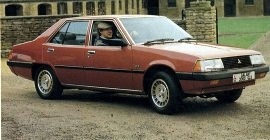 |
|
 |
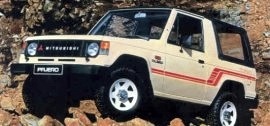 |
|
 |
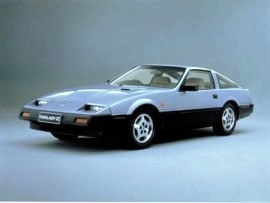 |
|
 |
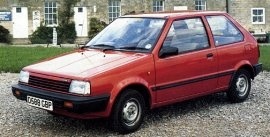 |
|
 |
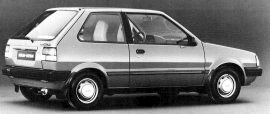 |
 |
Nissan Micra |
| |
Also see: Nissan Car Reviews |
| |
Early 1983 saw the first European appearrance of an important Japanese entry in the battle of the minicars, the Nissan Micra. Aimed directly at the market slot then being fought over by the VW Polo, Opel Corsa, Ford Fiesta, and British Leyland Metro, the Micra was another product of then current design thinking concerning weight reduction as a pathway to economy. Weighing in at approximately 1400 Ibs, it compared well with the Opel Corsa, at 1600 Ibs approx. |
|
 |
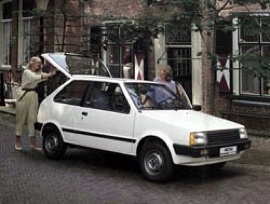 |
 |
Nissan Micra |
| |
Also see: Nissan Car Reviews |
| |
The Nissan Micra's lightness came from careful design of components, with lightness and small size as important parameters, and the use of then modern techniques such as alloy radiator construction and high tensile steel body panels which cut out the need for double-skinning in certain areas. The transversely-mounted 987 cc four-cylinder engine was also included in the weight reduction programme, and boasted an aluminum block and head with thin iron liners cast in. Even the rockers operating the inclined valves from the single belt-driven overhead camshaft were in aluminum. The engine produced 57 horsepower. |
|
 |
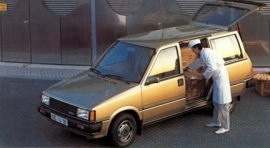 |
 |
Nissan Prarie |
| |
Also see: Nissan Car Reviews |
| |
Nissan's Prairie was the forerunner of a design trend which became a growth area of the mid-eighties, combining the space of a van with the comfort and driving convenience of a car. With its vast interior space and its sliding rear door, it was a trend-setter. The speed with which other manufacturers followed that trend in Japan and America left the European makers well behind. |
|
 |
 |
 |
Nissan Silvia |
| |
Also see: Nissan Car Reviews |
| |
Like Honda, Nissan also chose the 1983 Frankfurt Motor Show for the world premiere of their new Silvia. Aimed at the sub-Porsche sports coupe market, the car was an attractive 2 + 2 hatchback with a fashionable wedge shape and a well-equipped interior with plenty of space for even the biggest occidental driver - someething which Japanese designers sometimes ignored. The Silvia's sporting appeal lay mainly in its power units, with two twin-cam, 16-valve fours available. Unusually, it was the 1.8-liter turbocharged version which had the lower power output, at 137 hp, while the 2-liter unblown version developed 145 hp. With equally good fuel consumption, the turbo was arguably a better proposition, if only because it lacked the rather ugly "power bulge" in the engine cover which marked the 2-liter car. |
|
 |
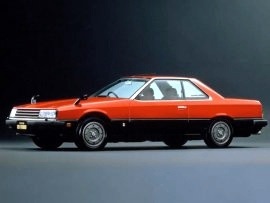 |
|
 |
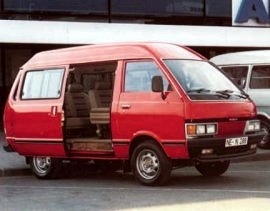 |
|
 |
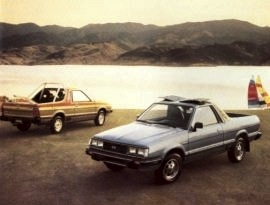 |
|
 |
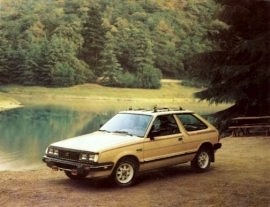 |
|
 |
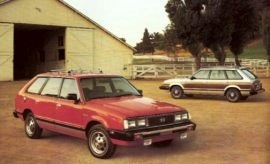 |
|
 |
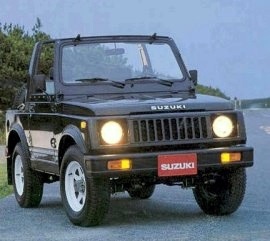 |
|
 |
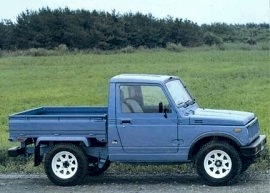 |
|
 |
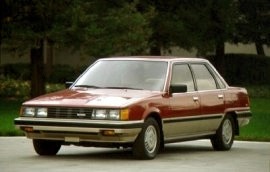 |
|
 |
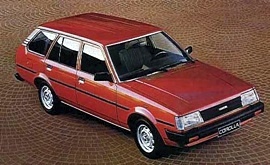 |
 |
|
| |
Also see: Toyota Car Reviews |
| |
An important new Japanese car for 1983, from the point of view of world markets, was the front wheel drive Toyota Corolla. The Corolla name covered both sedans and coupes, and although the entire range was updated, only the sedans were equipped with the newly developed front wheel drive package. Toyota's action was more understandable when considered in the light of their marketing organization in Japan, where different models were sold through different dealer networks; it was only in export markets that one dealer would handle the entire range. The sedan and hatchback versions of the Corolla were fairly typical of large-production Japanese cars of their generation, efficient without being outstanding, and their styling was somewhat bland. The range of power units was wide, covering 1.3, 1.5, and 1.6 liter petrol engines and a 1.8 liter diesel. The engines were mounted transversely, unlike the smaller Tercel, which had a north-south layout, but there was still quite a lot of Tercel in the mechanical make-up of the cars. The coupe made up for its lack of a new drive set-up with the availability of a sophisticated four valves per cylinder 1600 cc twin cam engine utilizing an unusual induction system developed in collaboration with Yamaha, who built many of Toyota's high performance engines. The system involved a butterfly valve in the inlet tract for each cylinder which opened and closed in relation to engine speed. Toyota claimed that it improved drive ability and torque at low speeds. |
|
 |
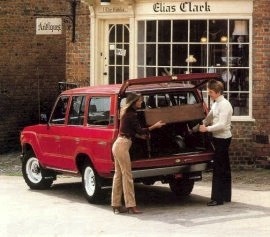 |
|
 |
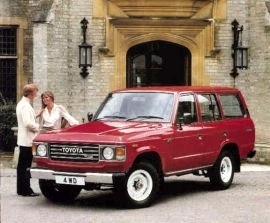 |
|
 |
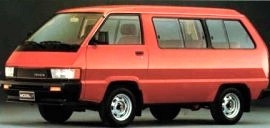 |
|
 |
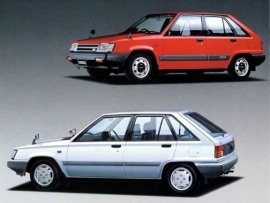 |
|
 |
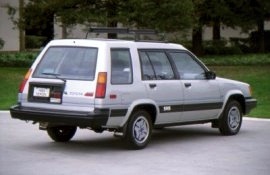 |
 |
|
| |
Also see: Toyota Car Reviews |
| |
Less than four years after its first appearance, Toyota's first front-wheel drive car, the Tercel, took on a new shape. More than just the styling had been transformed however, for except the engine, it was a completely new car, built on more compact lines. The Tercels wheelbase was reduced by 2.75 inches to 95.7 inches, and overall length was 152.7 inches - down by 3.9 inches. Thanks to an increase in track, interior space had been improved all round. Suspension was by MacPherson-type struts on all four wheels. The body had a plunging grille and headlamps reminiscent of the Carina allied to a four-door hatchback rear end with six side windows. The transversely mounted engine with gearbox underneath easily lent itself to modification to provide four-wheel drive, at a time when the "recreation vehicle" was becoming increasingly popular in Japan.
|
|
 |
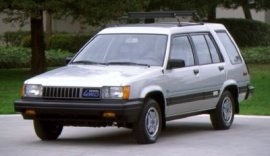 |
 |
|
| |
Also see: Toyota Car Reviews |
| |
The 4 wheel drive version sported a higher roofline and a redesigned rear end carrying larger side windows and a fully opening, sill-less hatchback. Length of the Tercel 4x4 was 11.4 inches longer at 164.1 inches but overall weight was only 33 Ibs greater at 2006 Ibs. Power came from a 1452-cc unit producing 52 kW (70 hp), which replaced the standard 1295-cc 48-kW (65-hp) engine. The drive went through a six-speed box equipped with a rear-facing coupling. The Tercel 4 x 4 made use of the standard front suspension of the saloon, and the rear suspension and axle mounted coil springs with four locating arms, a Panhard rod, and an anti-roll bar. The transmission did not make use of the traditional transfer box, with high and low ratios, but was modelled on the lines of that used in the VW litis, a standard gearbox (five speeds in the case of the Tercel) with an additional extra-low ratio for use in difficult conditions and only usable when four-wheel drive was engaged. The ratio was 4.714, compared to the 3.667 of the normal first gear. The Tercel could be used in two or fourwheel drive at will, selection being made by means of a lever at the driver's side, but there was no provision made for locking the differentials. Capable of a top speed of 155 km/h (96 mph), the Tercel was trimmed more for road comfort than cross-country efficiency, with comfort levels comparable with a saloon car. Power steering was fitted and there were such gadgets as an indicator to show the angle of slope being traversed, both fore-and-aft and side-to-side. |
|
|
|

|
|
 |
|
|
|
